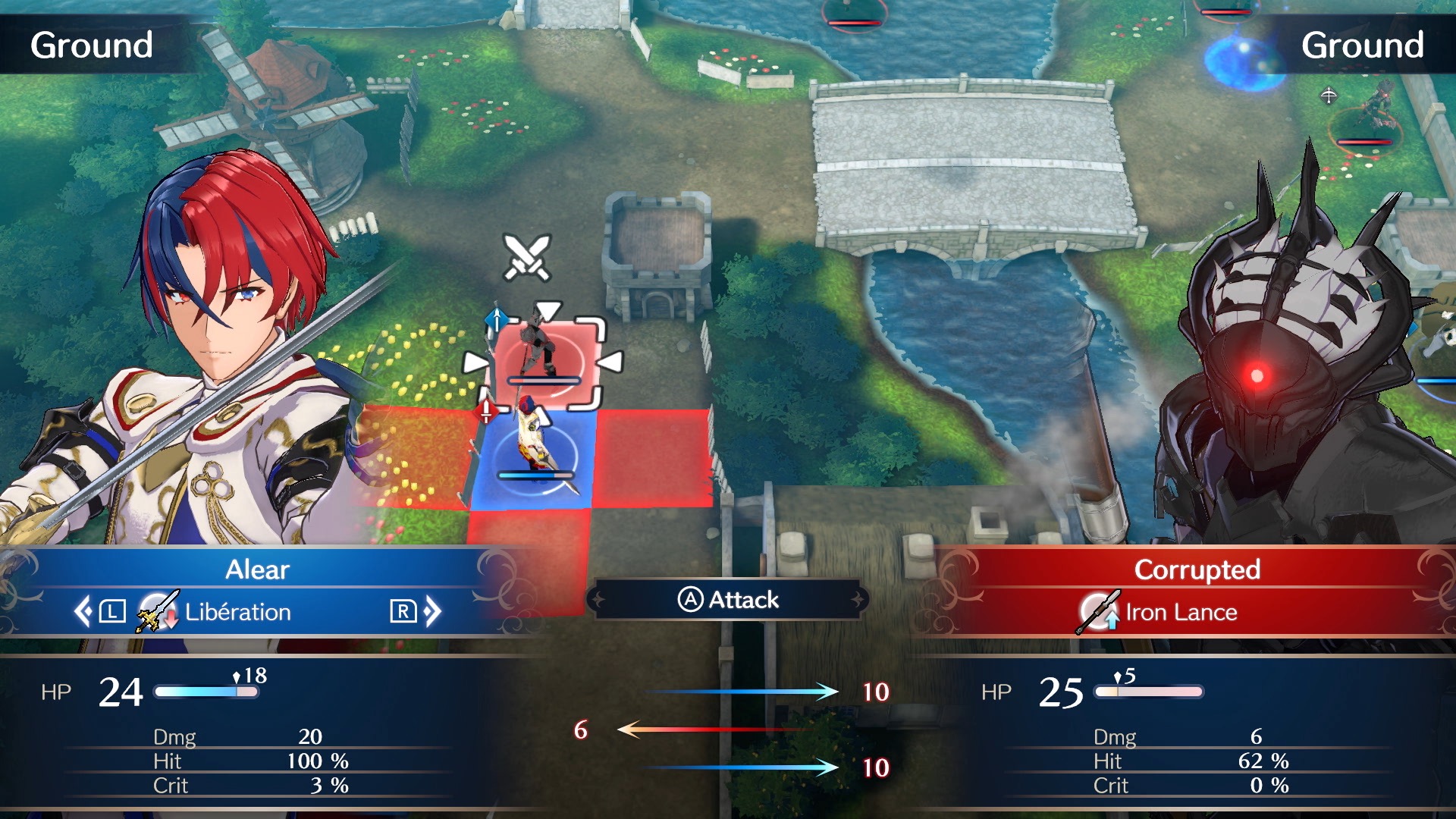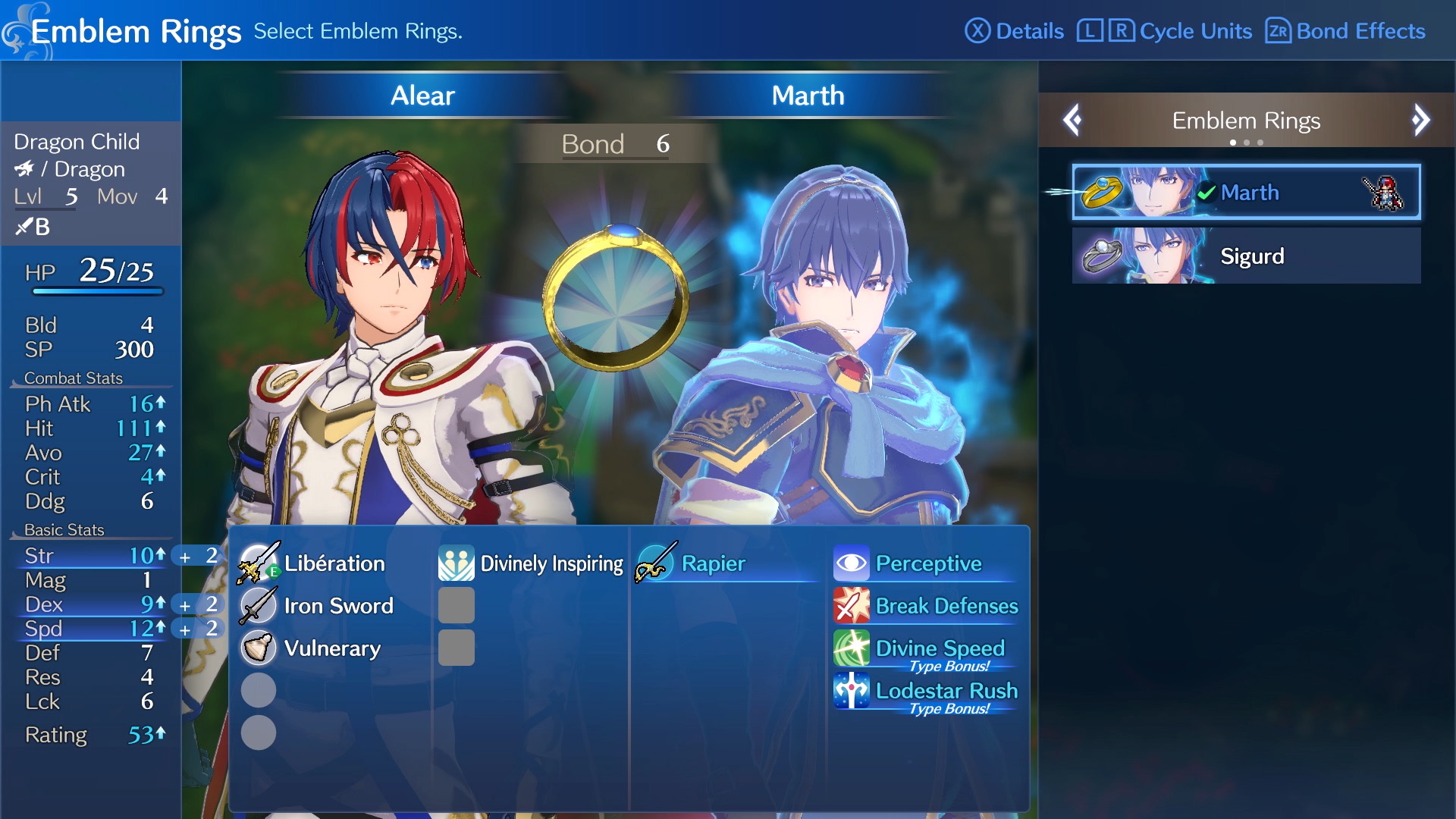Although I’ve been a longtime admirer of Intelligent Systems and its impressive portfolio of games, I can’t necessarily call myself a Fire Emblem fan. Sure, I’ve dabbled with the franchise here and there, but for the most part, I’ve focused my attention on the company’s other turn-based strategy series. Yes, it has been over 15 years since we’ve seen a new Advance Wars game. And yes, I’m still salty about it.
Perhaps it’s fitting that I’ve jumped back into the scene with Fire Emblem Engage, which looks to past entries for inspiration while shedding some of the newer series staples fans have come to know and love. Depending on which era of Fire Emblem games you enjoy the most, some of these changes might rub you the wrong way, but I’m confident that they won’t ruin or tarnish the experience for the wider community… hopefully.
You play as Alear, the Divine Dragon daughter or son (your choice) of the Divine Dragon Monarch, Lumera. Awakening from a thousand-year slumber, you’re tasked with saving the world from the Fell Dragon. I won’t beat around the bush, the premise is pretty by-the-numbers JRPG, and in a few years, I’d be shocked if anyone referred to the actual story as memorable. For the most part, it’s a classic tale of “good vs. evil.”

And for any newcomers looking to give this one a go, here’s some info that’ll save you from any confusion. Fire Emblem has a long history with “dragons,” which, in this case, are both a race and a class. Some “dragons” actually look like… you know, dragons, while others are humanoid in their appearance. Honestly, I don’t really get it. You might not get it either. But it’s hardly important in the grand scheme of things, so let’s move past this one.
Unlike Three Houses and its calendar system, Engage is a decidedly more linear experience, and depending on who you ask, this might be one of its weak points. While you almost always have a handful of missions to choose from, the story itself is fairly straightforward, with no branching paths. That’s right — gone are the multiple endings from the past few games. In fact, I couldn’t find a single, major plot choice, and other than a few optional recruits, any new characters will end up joining you in a fixed order.
As someone who was perfectly content with the cobbled-together “cutscenes” that constitute the plot of each Advance Wars game, this change doesn’t particularly bother me, but those who have come to know and love the “modern era” of Fire Emblem (a.k.a. every game since Awakening released a decade ago) might not be too pleased. This goes double if you mostly play Fire Emblem for relationships and romance. Sure, they’re still here, but they’ve been heavily pared back, almost to the point where some of the social sim aspects feel like afterthoughts. The Support system is still present and accounted for, though with a rather large cast of characters to meet and befriend, you’ll find yourself unintentionally neglecting some, leaving them a bit too underpowered later on.

Sure, the much-beloved relationship-building hasn’t been given the same attention and care afforded to other entries in the past decade, but if there’s one area that has been tightened up and polished, it’s the combat. The tried-and-tested formula hasn’t changed that much — tactical, grid-based battles are the name of the game, and the rock-paper-scissors triangle is front and center. For those who need a refresher: weapons fall into one of three categories, with swords beating axes, axes beating spears, and spears beating swords.
There’s a reason it has remained central to the franchise for over 25 years, though Engage brings about a few alterations. Most notably, attacking with an advantageous weapon (e.g. bringing an axe to a spear fight) inflicts a break effect. On top of the additional damage you’d normally dole out, when an attacking unit inflicts a break onto a defending unit, the defender will drop their weapon. This renders them incapable of counterattacking, not only for that one bout but for one additional encounter on the same turn.
While “breaks” certainly add more risk and reward to each battle — seeing as how your own units can be temporarily rendered useless by an enemy inflicting their own break — they can also pave the way for some incredibly well-coordinated attacks, and when playing on Hard or Maddening, they can be crucial, with any slip-up likely resulting in your downfall.

And then there’s the titular Engage system. As you come across different Emblem Rings during the course of the story, you’ll be able to equip them to your own units, giving them not only stat bonuses but the option to engage (read: merge) with the spirit of past Fire Emblem heroes housed within the ring, granting them unique weapons and abilities, the latter of which can let you pull of chain attacks, hit multiple units at once, or increase your movement capabilities.
With a large roster of characters and 12 different Emblem Rings, there are a lot of combinations to try out, and as a unit and Emblem fight together in battle, the bond between the two grows, allowing you to purchase permanent stat gains and new skills. There are a lot of combinations to consider, and alongside that, a bit of pressure to plan things out and put together a balanced roster, as it takes time to reach to fully max out a bond between a unit and an Emblem. Unfortunately, there’s not a lot in the way of meaningful interaction with the different Emblems. Seeing these familiar faces will be a nostalgia trip for some, but they rarely have any influence on the main story.
It’s perhaps a bit disappointing that, even though Fire Emblem Engage boasts some of the series’ best turn-based combat, it undoubtedly falls short when it comes to its story and character development, which is the key selling point for a sizable portion of the franchise’s loyal fans. For those yearning for a deep turn-based tactics game, Engage is more than up for the task. But if the romance and social sim aspects are what sold you on Fire Emblem, you might want to temper your expectations.
This review is based on the Nintendo Switch version of the game. A copy was provided by Nintendo.
Good
As a turn-based tactical RPG, Fire Emblem Engage delivers on all fronts. On the other hand, when it comes to its social sim systems and story, this latest entry falls short of the mark, especially when compared to its predecessors.
Fire Emblem Engage
